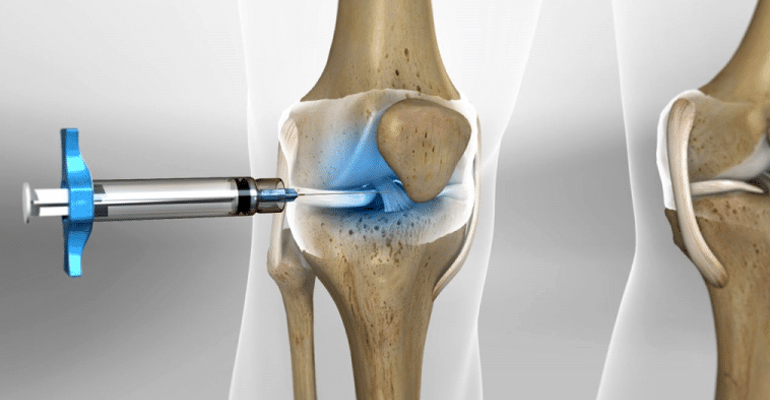-
-
+91-8591556577
-
Viscosupplementation

Viscosupplementation (Gel Shot Injection)
Viscosupplementation, commonly known as a gel shot injection, is a minimally invasive treatment used to alleviate pain and improve mobility in individuals suffering from osteoarthritis of the knee and other joints. This procedure involves injecting a gel-like substance, usually hyaluronic acid, directly into the joint space to enhance lubrication, cushion the joint, and reduce inflammation.
Indications for Viscosupplementation
Viscosupplementation is primarily indicated for:
- Osteoarthritis: It is most commonly used for patients with knee osteoarthritis, particularly those who have not responded adequately to other conservative treatments, such as physical therapy or anti-inflammatory medications.
- Joint Pain: It may be considered for patients experiencing pain in other joints, including the hip and ankle, due to degenerative joint diseases.
How Viscosupplementation Works
Hyaluronic acid is a naturally occurring substance found in joint fluid, providing lubrication and shock absorption. In patients with osteoarthritis, the level of hyaluronic acid in the joint may decrease, leading to increased friction and pain. Viscosupplementation aims to restore this essential lubricant, providing several benefits:
- Increased Lubrication: The gel shot enhances the viscosity of joint fluid, improving lubrication and reducing friction during movement.
- Shock Absorption: By acting as a cushion, hyaluronic acid helps absorb shocks and impacts, relieving pressure on the joint.
- Reduced Inflammation: The injection may help reduce inflammation and pain in the joint, allowing for improved mobility and function.
The Viscosupplementation Procedure
The procedure for viscosupplementation typically involves the following steps:
- Preparation: The patient is positioned comfortably, often seated or lying down, depending on the injection site.
- Cleansing the Area: The skin over the injection site is cleaned with an antiseptic solution to minimize the risk of infection.
- Local Anesthesia: A local anesthetic may be administered to numb the injection site, although this is not always necessary.
- Injection: A thin needle is carefully inserted into the joint space, and the hyaluronic acid gel is injected. The amount and type of gel used may vary based on the specific product and the patient's needs.
- Monitoring: After the injection, the patient is typically monitored for a short period to ensure there are no immediate reactions.
Recovery and Aftercare
Most patients can return to their normal activities immediately after the procedure. However, some may experience:
- Temporary Discomfort: Mild pain or swelling at the injection site is common and can usually be managed with ice and over-the-counter pain relievers.
- Activity Modifications: Patients may be advised to avoid strenuous activities or excessive weight-bearing for a short period following the injection.
- Follow-Up: A follow-up appointment may be scheduled to evaluate the effectiveness of the injection and to discuss further treatment options if necessary.
Benefits of Viscosupplementation
- Pain Relief: Many patients report significant pain relief and improved joint function following the injection.
- Minimally Invasive: The procedure is performed on an outpatient basis, requiring minimal recovery time compared to surgical options.
- Improved Mobility: By reducing pain and inflammation, viscosupplementation can enhance mobility and quality of life.
- Long-Lasting Effects: While the duration of relief may vary, many patients experience benefits lasting several months, allowing for improved function and reduced reliance on pain medications.
Risks and Considerations
Viscosupplementation is generally safe, but there are potential risks to consider, including:
- Infection: There is a small risk of infection at the injection site.
- Joint Pain or Swelling: Some patients may experience increased pain or swelling following the injection, which typically resolves within a few days.
- Allergic Reactions: Rarely, some individuals may have allergic reactions to the injected substance.
- Bleeding or Bruising: Minor bleeding or bruising may occur at the injection site.
